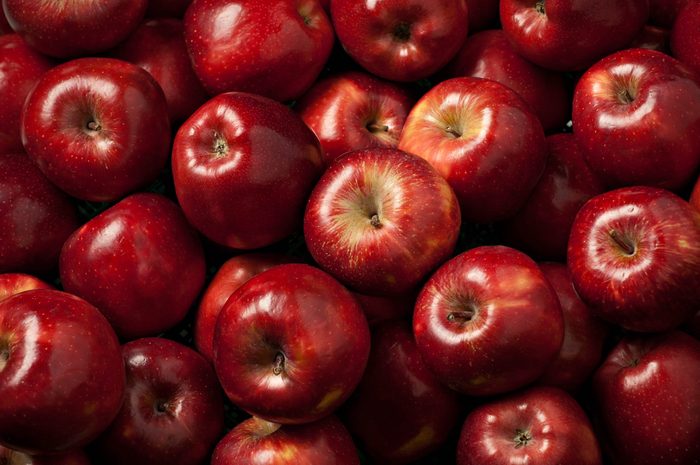
Apples
An apple a day might keep the doctor away, but not if it rots before you can enjoy it. Apples can stay at room temperature, but store your apples in the refrigerator crisper drawer, if you want greater longevity. Leaving an apple out at room temperature will cause it to ripen after a few days, but one of the best food storage tips is to pop it into the fridge. This will keep it crisp for weeks. (Just make sure it’s never with any of these foods you should never keep in the fridge.)
If you don’t like the idea of your apples just rolling around in the crisper drawer, contain them—along with all your other fruit and veggies—in BPA-free Debbie Meyer GreenBags. You’ll save money too, because these bags are reusable up to 10 times each.
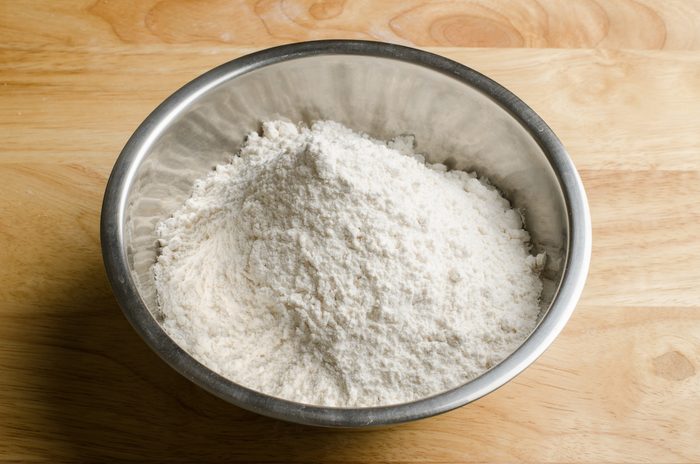
Flour
Flour will stay fresh and usable if it’s in an airtight metal, glass, or plastic container, rather than leaving it in the paper bag packaging from the store. Flour takes a longer time to go bad compared to most foods, but the process will still move faster if it isn’t protected. Whole grain flours are particularly sensitive.
You might want to consider storing whole grain flour in the refrigerator or freezer to slow down the oxidation process further. Since there’s nothing worse than forgetting what’s actually in your nondescript containers, choose a container that comes with a pen and labels like these extra-large, air-tight options from Chef’s Path that have over 10,000 ratings (and 86 percent of them are 5 stars!).

Fruit
Many people store fruit in the refrigerator—and with apples and some sensitive fruits like raspberries, that may be a good plan, but other fruit needs to ripen on the counter before going in the fridge with other foods. Fruit also should not be stored with vegetables because they can cause each other to deteriorate faster because of the different gases they emit.
Separation here is key, which is why the U-Konserve divided stainless steel container may be best for storing, say, two types of berries. Food storage tips like this will keep your produce fresher for longer.
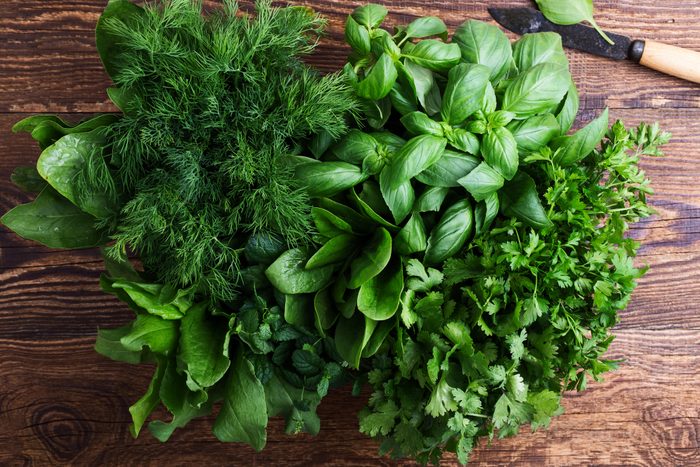
Herbs
There’s nothing better than adding fresh herbs to your recipes, but oftentimes only a few sprigs or leaves are needed to complete a dish. What to do with all those leftovers that seem to wilt so quickly? Pop them into a Prepara Herb Savor Pod 2.0, which can give your herbs life for up to three weeks.
Pro tip: reviews call it a “miracle” for asparagus, too, because it helps keep stalks hydrated. Just be sure to change out the water every few days to keep them happy.
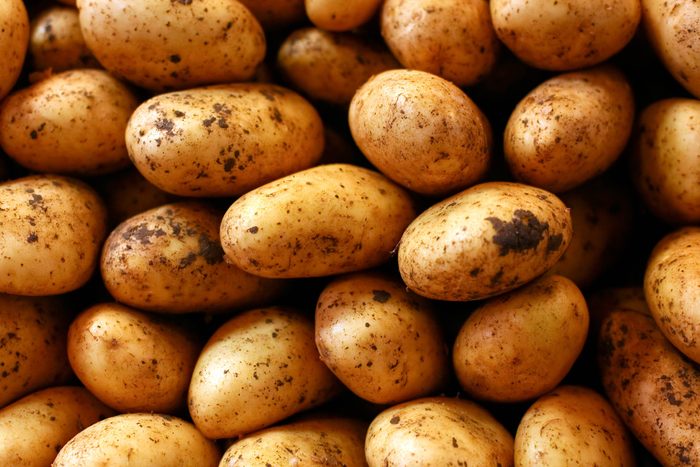
Potatoes
Potatoes need to be in a dry, cool, and dark place in order to stay fresh. Potatoes do not do well in the refrigerator, though, as temperatures that are too cold (below 50 degrees) will cause the starch in the potato to convert to sugar. That conversion will make the potatoes taste overly sweet, and will discolor them too.
There’s no cuter way to store your potatoes than in a farmhouse-style metal canister that holds about 9 pounds worth of your favorite tubers and has ventilation holes to keep them fresher longer.
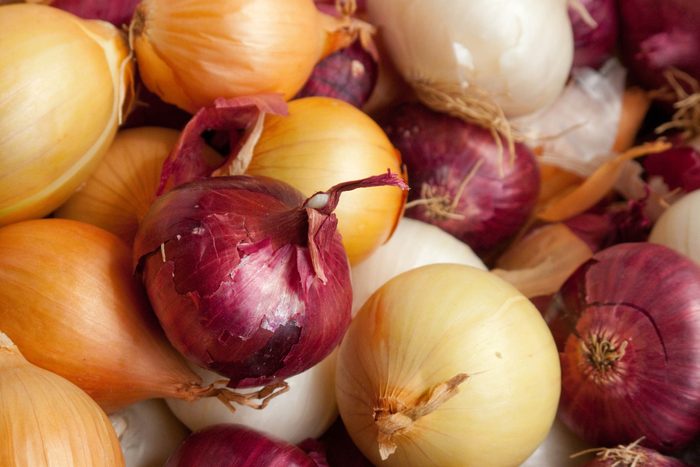
Onions
Like potatoes, onions can be a little sensitive. They need to be stored in dry, dark, cool places, but they also need reasonable air circulation to stay fresh. On top of this, onions should not be stored near potatoes, even though both foods need to be stored in similar conditions. Onions and potatoes bring out moisture and gasses in each other, causing them both to ripen faster.
Refrigeration is a good choice to keep onions fresh—and when stored in the fridge, your eyes will tear up less when you chop them. When your recipe only calls for part of an onion, store the rest of it in a Hutzler Onion Saver so it’ll stay fresh and minimize odor in the fridge. One Amazon customer calls it “my favorite stupid thing I’ve ever bought.”
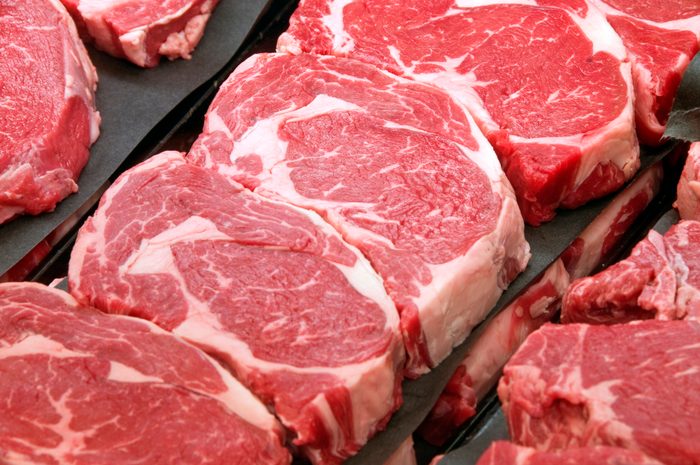
Fresh meat
If you’ve purchased fresh meat from the store, few food storage tips are better than just leaving it in its original package. Keep it in its store wrapping and follow the meat storage guidelines as given, because re-wrapping and storing meat actually increases the risk of exposing it to bacteria along the way. If your meat didn’t come with a tray under it, though, put a plate underneath the package to catch any excess moisture.
When it comes to storing deli meat, lean on the Prepworks Deli Prokeeper. This dishwasher-safe container keeps everything from salami to bacon fresher longer thanks to its airtight silicone seal, and you can even use a dry erase marker to track expiration dates.
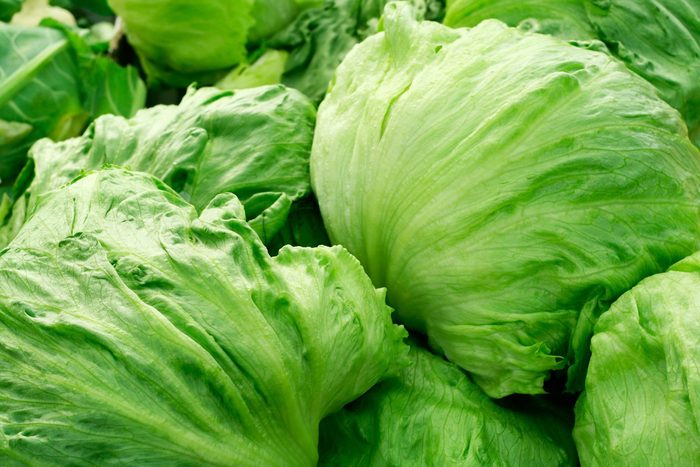
Lettuce
When lettuce goes bad, it gets slimy, which is wasteful, not to mention gross. To avoid this, do not put your lettuce in a plastic bag. Lettuce needs to be in a perforated bag, or washed correctly and stored in a bowl in the refrigerator or in a paper bag once it’s completely dry.
Even though you see supermarkets spraying their lettuces, the moisture actually ages them faster. To help leafy greens last even longer, slip a Freshpaper food-saver sheet in the bag or right into your crisper drawer. These sheets can help double the life of your produce.
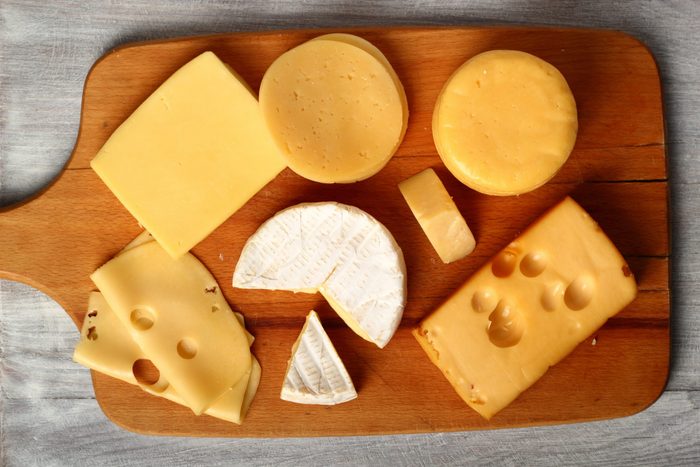
Cheese
Hard cheeses, like Parmigiano and aged cheddar, need special food storage tips, like not packing them in airtight storage containers. Make sure your hard cheeses are stored in the store wrapping until you use them—don’t repackage—preferably in the cheese drawer of your fridge.
There, they’ll last six months, according to a report by Extension Food Safety Specialists at Oregon State University. (They’ll last up to eight months in the freezer but might get more crumbly.)
Once you’ve broken them out, re-wrap them wax paper or loose plastic (here’s why you should never wrap leftovers in foil) when putting them back in the refrigerator. Bee’s Wrap is a solution many home chefs rely on because these beeswax food wraps are reusable, responsibly sourced, made in the USA, and free of plastics and silicones.
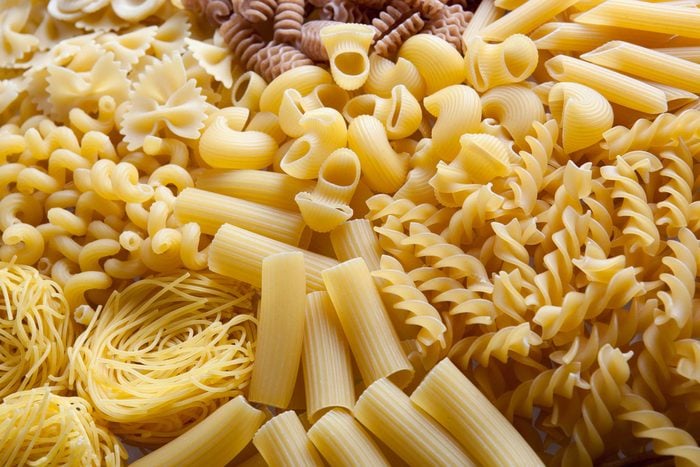
Uncooked pasta
Despite popular belief, uncooked pasta should not be stored in its original container if you want it to last longer. Repackage uncooked pasta in an airtight glass container to extend its life and avoid the mustiness and moisture problems that sometimes occur over time with original cardboard packaging.
This set of three tall, glass pasta containers have airtight seals to keep moisture out and are dishwasher safe except for the wooden lid. They can also be used to store dry beans, oats, nuts, and other pantry items.
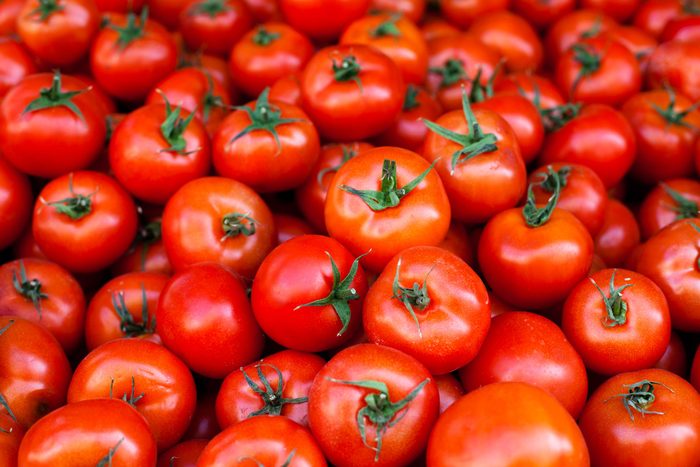
Tomatoes
Tomatoes are another sensitive food that can be tricky to store. A few food storage tips: They should be left on a countertop, but away from light, moisture, and heat. They should not be stored in the refrigerator, or their cellular structure will start to collapse, which is what causes that mushy, mealy texture—and the flavor will be lost too.
Tomatoes will ripen at room temperature and are good for two to three days once ripe. However, the rules change once you’ve sliced them open: Place chopped tomatoes into a silicone Stasher bag and refrigerate them within two hours (and eat within two days).
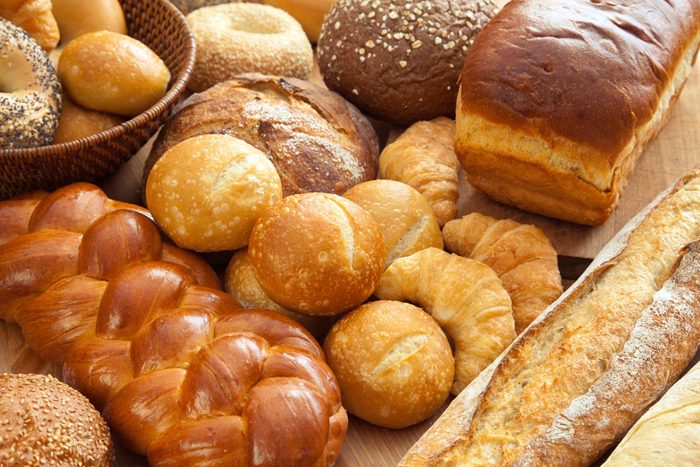
Bread
Bread can be stored in the pantry, but it will last much longer when it’s stored in the refrigerator or freezer. Fresh bread can get moldy quickly, so utilizing the cold storage areas of your house can help extend its shelf life substantially, though it may get stale faster, according to the Oregon State University report mentioned above.
In that case, simply pop it in the oven or toaster to restore crispness. Bread is fine to use in a toaster oven directly from a freezer without any risk of sogginess.
Storing bread for longer also helps you get more resistant starch in your diet, which is the “good carb” you need to eat more. And if you like to bake your own breads, an unbleached linen bread bag is a sustainable and rustic-chic way to store your fresh loaves. You can remove your store-bought loaves from their plastic and place them in these, too.
